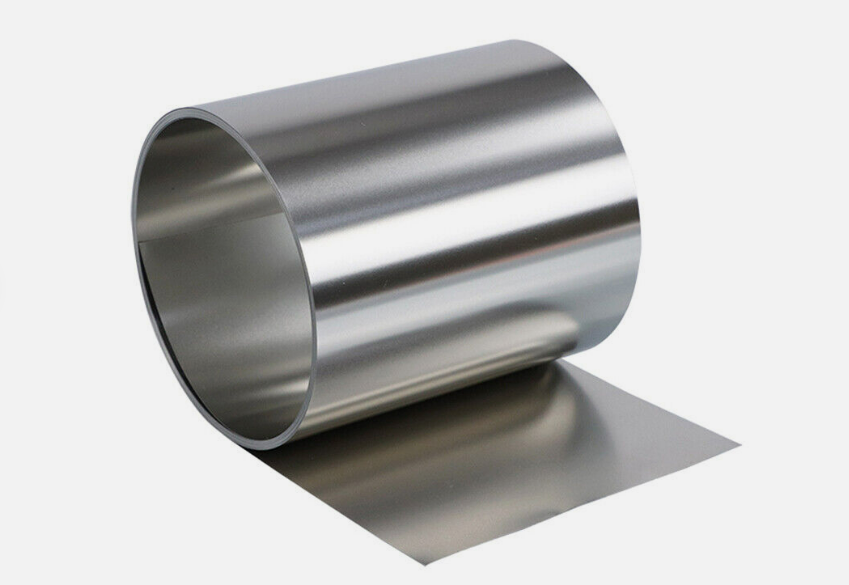The passivation film on the surface of 304L stainless steel strips mainly plays a protective role, delaying rust corrosion. However, in practice, there are many factors that can damage the passivation film on the steel surface, turning the passive state of the steel surface into an active state, thereby reducing the corrosion and oxidation resistance of 304L stainless steel strips, leading to rust corrosion. Next, we will share some common factors that damage the passivation film on the surface of 304L stainless steel strips. Let’s take a look at what they are.

4 Factors Affecting the Passivation Film of 304L Stainless Steel Strips:
- Chloride ions.
Chloride ions have a very serious harm to 304L stainless steel strips. During the passivation process, the chloride ion content in the passivation solution should be strictly controlled. Under normal circumstances, the chemical materials used for passivation have requirements for the chloride ion content. When preparing the passivation solution, the chloride ion content in the water should be controlled. Even during cleaning, the chloride ion content in the water needs to be monitored to ensure that the chloride ion content is extremely low during the passivation process, so as to maintain the corrosion resistance of 304L stainless steel strips.
- Surface cleanliness.
As we all know, the surface of 304L stainless steel strips is smooth, and foreign objects are difficult to adhere to it, so the probability of corrosion is extremely low. However, some steel strips have a rougher surface, and foreign objects can easily adhere to it, which can cause corrosion on the steel strip surface. Therefore, attention should be paid to this issue during finishing.
In addition, the surface cleanliness of 304L stainless steel strips will more or less affect its surface passivation film. Therefore, when cleaning after passivation, we should be careful and meticulous. Once there is acid residue on the surface, the acid will promote the cathodic reaction, resulting in the rupture of the surface passivation film layer and activation of the steel strip surface, which greatly reduces its corrosion resistance.
- Environmental medium.
The passivation film on the surface of 304L stainless steel strips is a metastable structure that is inhibited from a thermodynamic perspective, and its protective effect is related to the environmental medium. Regular cleaning during use can help remove harmful substances adhering to the steel strip surface. Especially in specific environments containing chloride ions, it will accelerate the corrosion rate of steel strips. For example, in food processing industries, the steel strips are in contact with food after each use, so they should be cleaned in time to avoid damage to the passivation film caused by chloride ions remaining on the surface of 304L stainless steel strips.
Another example is that containers and equipment made of stainless steel strips are used for processing dairy products. The chloride ions contained in the dairy products will damage the passivation film. If the containers or equipment are used for a long time to store dairy products, they are prone to corrode through and perforate, so they need to be cleaned regularly to ensure that the passivation film can continuously protect the surface.
- Intrinsic factors of the stainless steel strip itself.
Certain components in some stainless steels can also affect their surface passivation film. For example, the martensitic content and the content of chromium and nickel in a stainless steel strip have a relatively large impact on the passivation film. If the nickel content is relatively low, the passivation performance is much poorer. In addition, compared with austenitic stainless steel strips, martensitic stainless steel strips have poorer passivation performance.
Conclusion
From the above content, it can be seen that chloride ions in 304L stainless steel strips, surface cleanliness, media in the use environment, and inherent factors can all damage the passivation film on the steel strip surface, which needs to be avoided during regular use.
If you want to find more information about stainless steel strips, we would like to advise you to visit Sino Stainless Steel for more information. As a leading supplier of stainless steel products across the world, Sino Stainless Steel offers customers high-quality stainless steel strips, stainless steel coils, stainless steel plates, stainless steel sheets, stainless steel bars, and stainless steel pipes at a very competitive price.
 :+86-13012867759
:+86-13012867759  :export86@sino-stainless-steel.com
:export86@sino-stainless-steel.com